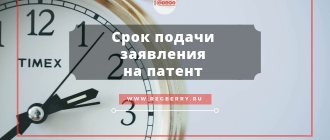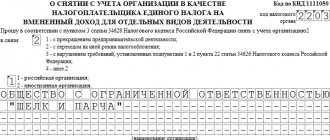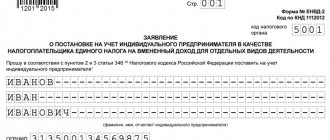Entrepreneurs who plan to engage in a certain type of activity need to decide on the tax regime. Today there are two most common taxation schemes - UTII or patent. Next, how does a patent differ from UTII, what are the strengths and weaknesses of these two tax regimes.
Main differences
Both described tax regimes imply “imputation” of the amount of the tax burden on the part of the state apparatus. But there are differences between them, and they look like this:
- a study of legislative norms allows us to conclude that UTII provides for 14 forms of business, and a patent - 47;
- a patent, unlike UTII, does not require tax reporting in 2020 (the exception is reporting on payroll taxes, but in this case the situation of using employees is implied);
- the difference is also in the tariff - the UTII taxation system implies a tax rate of 15%, in the case of the chosen patent taxation system, the payer must adhere to a rate of 6%.
What to consider when choosing
The main points have been indicated, but what is more profitable - a patent or UTII - each entrepreneur decides independently, taking into account all factors.
These tax regimes are very similar, but there are also significant differences. Therefore, to select a taxation system, it is necessary to take into account the priorities and specific factors of conducting business.
A patent has serious advantages: there is no need to report and calculate taxes quarterly, but this is balanced by the fact that payment of the cost of the patent is made in advance, and the consequences of late payment are not in the form of a penalty or fine, but the loss of the patent, with the recalculation of income according to the OSNO or the simplified tax system.
The “disadvantage” of UTII is the need for a quarterly report, which means paying the tax three months later, after the end of the quarter. In addition, although the tax is calculated using a complex formula, the amount may differ significantly for the same type of activity in the regions due to the coefficients established by local authorities. And a reduction in the amount of insurance premiums in some cases can significantly reduce the tax.
Therefore, when choosing between a patent or UTII, an individual entrepreneur needs to clarify the details and evaluate the advantages and disadvantages of each system.
Similar articles
- What taxes does UTII replace?
- What is better - simplification or imputation? Main differences
- Basic yield
- How to switch to UTII in 2020
- Imputation or simplification: what is the difference and what is more profitable?
Simultaneous use of UTII and PSN
The Tax Code of the Russian Federation allows for the simultaneous use of both PSN and UTII. According to legal requirements, taxpayers who have switched to UTII for certain types of activities must carry out separate accounting for receipts (that is, for income received). Also, the current special taxation system requires accounting transactions for property, business operations and liabilities.
The patent system requires the maintenance of a ledger. Entrepreneurs who have subordinated their activities to UTII must keep tax records separately.
What is the procedure and deadlines for paying taxes?
UTII Payment of UTII is made based on the results of the tax period no later than the 25th day of the first month of the next tax period (clause 1 of Article 346.32 of the Tax Code of the Russian Federation)
Patent system Tax payment is made at the place of registration with the tax authority: 1) if the patent is received for a period of up to six months - in the amount of the full amount of tax no later than twenty-five calendar days after the patent begins to be valid; 2) if the patent was received for a period of six months to a calendar year: in the amount of one third of the tax amount no later than twenty-five calendar days after the patent began to be valid; in the amount of two-thirds of the tax amount no later than thirty calendar days before the end of the tax period (clause 2 of Article 346.51 of the Tax Code of the Russian Federation).
Pros and cons of the two systems
The special UTII tax system has strengths and also disadvantages.
The advantages include:
- the ability to receive revenue of any size and at the same time allocate a fixed tax to the treasury;
- the opportunity not to pay VAT, property tax;
- voluntariness of the transition to this system and the right to refuse the chosen taxation scheme at any time;
- possibility of combination with simplified taxation system or OSN;
- the possibility of refusing to use cash register equipment.
The negative aspects of the UTII system are:
- the need to use a rather complex special calculation formula;
- the need to submit a quarterly tax return.
A patent has a number of advantages. He:
- allows the entrepreneur to voluntarily switch to the system that interests him;
- allows the merchant to choose the required period during which the patent will be valid (the validity period of a patent can range from 1 month to 1 calendar year);
- implies a tax amount that does not depend on the actual income of the individual entrepreneur;
- allows you not to pay personal income tax, VAT, tax on property assets of individuals;
- does not require the individual entrepreneur to independently calculate the tax (the official tax officer issues the individual entrepreneur a document where the tax amounts have already been calculated);
- implies a simplified accounting procedure (an individual entrepreneur must keep tax records in the individual entrepreneur’s income book);
- does not require submitting a declaration.
The patent also has its disadvantages. This:
- the need to pay for a patent before starting business;
- the need to obtain several patents if doing business in different regions of the state;
- framework regarding the final annual income (the total income of an individual entrepreneur who operates under a patent should not exceed 60 million rubles per year);
- restrictions on the number of employees hired (an individual entrepreneur working under the patent system should have no more than 15 people);
- impossibility of deducting the amount of insurance premiums from the patent price.
Important! The patent can be paid either immediately or in two stages.
Patent or UTII - which is more profitable?
An individual entrepreneur who runs his own small business, in most cases, has fairly wide opportunities for saving on taxes. In addition to the general taxation system and the widespread and beloved simplification, the tax code offers merchants a choice of two more special regimes: patent or UTII. What is more profitable in terms of the amount of tax deductions? Let's try to understand this issue.
Pros and cons of a patent
Any individual entrepreneur can switch to a patent taxation system if he and his business meet certain requirements. First of all, this concerns the planned type of activity - it must be established by local law, as possible for the transition to PSN, in the region in which the merchant intends to carry it out. All those areas that can be transferred to PSN are indicated in paragraph 2 of Article 346.43 of the Tax Code. At the same time, constituent entities of the Russian Federation that adopt a law on the introduction of a patent system on their territory have the right to expand this list to include additional household services listed in the All-Russian Classifier of Services to the Population. The average number of employees of an individual entrepreneur applying for a patent cannot exceed 15 people, and the amount of annual income from sales should not exceed 60 million rubles (taking into account annual adjustments due to the deflator coefficient). Moreover, if the first indicator is calculated only for those areas of activity that are transferred to a patent, then the limit on the amount of income is determined for all types of activities carried out by the individual entrepreneur, including those not transferred to the PSN.
It is interesting that you can purchase a patent for a particular type of activity at any time, that is, there are no restrictions on switching to the PSN from the general or simplified taxation system from the beginning of the next calendar year. There is only one exception in this case: you need to wait until the end of the year if the current activity is carried out within the framework of UTII. But this feature does not relate to the patent itself, but to the procedure for working on the imputed tax: it is impossible to abandon UTII ahead of schedule.
An entrepreneur operating under a patent does not submit any reports. However, if, for example, he applies the simplified tax system or UTII for other types of activities, then he is obliged to report on them. But this again does not apply to the patent itself. In fact, PSN does not involve reporting. There is only one requirement: an individual entrepreneur with a patent is required to keep a book of income in order to track their established limit. But this document is not submitted to the Federal Tax Service.
The amount of tax on PSN is determined based on the rate of 6% and the possible annual income for a specific area of activity. Specific amounts of such income are determined in the law of the subject of the Russian Federation, on the basis of which the use of a patent was introduced in the region.
The main disadvantage of the patent system is that the cost of the patent, that is, the patent tax, cannot be reduced by fixed contributions from individual entrepreneurs or insurance premiums paid for employees. This possibility, with certain assumptions, exists in all other tax regimes.
Pros and cons of UTII
In particular, due to insurance contributions, you can reduce the tax on UTII. An individual entrepreneur without employees can reduce the calculated imputed tax by fixed contributions paid for himself, and this can be done to zero. That is, if the annual tax amount turns out to be less than the amount of individual entrepreneur contributions established for the same year (remember, in 2016 this was 23,153.33 rubles), then all that remains is to divide the pension payment into 4 parts and carefully transfer them until the end of each quarter . Then you won’t have to pay UTII at all.
Individual entrepreneurs with employees can reduce the calculated UTII only at the expense of insurance premiums paid for employees, as well as sick leave benefits paid to them. Fixed contributions of the individual entrepreneur himself are not taken into account, and the tax can be reduced to no more than half of its calculated amount. But even such a decrease may be quite significant.
Unlike PSN, UTII requires the submission of quarterly reports.
The transition to UTII for an already ongoing type of activity can be made only from the beginning of the year, and from the beginning of the next year you can refuse imputation, unless, of course, the direction transferred to it is actually closed earlier. Of course, the transition to UTII also requires the individual entrepreneur to comply with certain conditions, but they mainly relate to the specific types of business carried out by the entrepreneur. For example, you can conduct trade or open a catering outlet in a service area of no more than 150 square meters. m, and it is permissible to provide transportation services only when using no more than 20 vehicles. There is one more restriction in relation to the individual entrepreneur itself - the number of its employees cannot exceed 100 people.
But the principle of determining the imputed tax is somewhat similar to the calculation of payment for the PSN. It also does not depend on real income, but is 15% of imputed income, which in turn is calculated on the basis of coefficients at the federal and local levels, and also depends on certain conditions for a specific type of activity transferred to UTII.
Tax mathematics
It is worth adding that the imputed special regime is not as widespread as a patent. Not all regions have adopted the law on UTII, or it is applied with a rather limited list of activities that are transferred to imputation. However, if a certain line of business can be transferred in a specific subject of the Russian Federation to both UTII and PSN, the entrepreneur inevitably faces the problem of choosing: patent or UTII, which is more profitable?
As follows from everything said above, it is impossible to talk about the unambiguous benefit of one or another special regime. For each specific case, the final tax amounts must be calculated. But, since in both cases the budget payment is determined based on their fixed indicators, it is possible to make a calculation in advance, thereby determining which of the systems will save more on taxes.
Let's look at this with an example.
Example 1:
IP Petrov I.V., registered in the Klinsky district of the Moscow region, carries out activities of transporting passengers in its own car. According to the technical passport, the car has 5 seats.
According to the Law of the Moscow Region “On the Patent Taxation System” dated November 6, 2012 No. 164/2012-OZ, income from activities related to the transportation of passengers, if it is carried out by an individual entrepreneur without the involvement of employees, is 215,254 rubles. in year. The tax amount in this case will be 12,915 rubles.
The calculation of imputed income for the same activity for 1 month of work is made based on fixed indicators, by multiplying the following values:
- basic profitability - for passenger transportation is equal to 1,500 rubles per seat per month.
- number of seats.
- coefficient K1, for 2020 it is 1.798,
- coefficient K2. The value of this coefficient was established by the Decision of the Council of Deputies of the Klinsky District of the Moscow Region dated October 25, 2007 No. 3/45 and is equal to 1.
The total quarterly tax will be:
1500 x 3 x 5 x 1,798 x 1 x 15% = 6068.25 rub.
For the year, the estimated amount of tax on UTII will be 24,273 rubles, but it can be reduced by paying a fixed contribution. If an individual entrepreneur transfers the contribution amount to the Pension Fund in quarterly installments of 5,788.33 (23,153.33: 4), then he will only have to pay 1,120 rubles to the Federal Tax Service. or 280 rub. quarterly. Thus, in this case, the use of UTII is more justified subject to timely settlements with the Pension Fund.
Example 2:
In the same Klin district of the Moscow region (directly in the city of Klin), IP Sidorov carries out trading activities in a pavilion with a sales area of 40 square meters. m with the involvement of two hired employees.
The amount of annual patent income based on the same Moscow Law “On the Patent Taxation System” for retail trade with a sales area of less than 50 sq. m is 469,685 rubles. if the entrepreneur has from 1 to 3 employees (not counting the individual entrepreneur himself).
Thus, the annual tax amount will be
469,685 x 6% = 28,181 rubles
UTII, taking into account the area of the trading floor, will be calculated based on the following indicators:
- basic profitability - for trading activities it is equal to 1800 rubles. per 1 square meter of sales area.
- Sales area.
- coefficient K1 (1.798),
- K2 coefficient equal to 0.8 based on the Decision of the Council of Deputies of the Klinsky District of the Moscow Region dated October 25, 2007 No. 3/45.
The total quarterly UTII will be:
1800 x 3 x 40 x 1.798 x 0.8 x 15% = RUB 46,604.16
For the year, the estimated amount of tax on UTII will be 186,417 rubles, which, even with the possibility of reducing it to half due to contributions paid to the funds for employees (subject to the corresponding levels of employee salaries), will be much higher compared to the tax on PSN.
What is better to choose for an individual entrepreneur?
A businessman, when considering UTII or a patent, must understand that each taxation system is designed for specific types of activities. The single tax is designed for activities related to:
- household services (this includes the business of providing manicure services, cargo transportation, as well as the business of crushing glass or plastic household material, the business of running catering establishments, car services, car washes, workshops);
- transport services;
- veterinary medicine;
- retail trade.
If an entrepreneur employs no more than 100 people in his private enterprise, and he does not rent a gas station and his activities are not related to official management contracts, he can safely choose the UTII taxation scheme. This system also sets requirements for the area of a retail space or premises for serving catering visitors. It should be no more than 150 square meters.
If the company employs less than 15 people, it makes sense to choose a patent. It will be considered as the most reasonable and profitable option. This special taxation system is also chosen when the work will not be carried out under official agreements of a simple partnership.
Important! A patent allows an entrepreneur to trade on an area of 50 square meters (it must be understood that such an area is the upper permissible limit).
A private entrepreneur must know about each tax system and be able to make comparisons. If necessary, you can switch from the UTII system to a patent. It is important to carefully study the pros and cons of each tax system and choose the most suitable option for your case.
What changes are expected on PSN from 2021
According to legislators, the proposed changes will make the patent system more popular. In particular, they must prevent the mass deregistration of individual entrepreneurs and their transition to self-employment.
The cost of a patent can be reduced by the fees paid
The biggest problem on the PSN is related to the insurance premiums of individual entrepreneurs for themselves. Not only do they have to be paid, regardless of income, but also the patent is the only system where the transferred contributions did not in any way affect the calculation of the tax.
But already in 2021, for individual entrepreneurs on the PSN, a tax reduction procedure will be established, which is currently in effect on UTII and simplified tax system Income:
- if the entrepreneur does not have employees, then he has the right to reduce the cost of the patent by the entire amount of contributions paid for himself;
- if the individual entrepreneur is an employer, then the cost of the patent can be reduced by no more than 50%.
If an entrepreneur without employees has several patents, and the value of one of them is not enough to fully account for the contributions, they can be deducted from other issued patents.
Since there are no declarations on PSN, you will need to indicate your desire to take contributions into account when calculating the cost of a patent in a special application. Its form will be developed by the end of this year.
The list of activities for PSN will be significantly expanded
You can find out exactly what types of activities can be carried out within the framework of the PSN from Article 346.43 of the Tax Code of the Russian Federation. The list is constantly updated, and currently there are 63 items.
The bill provides for expanding this list to 87 positions. However, this does not mean that a patent can be issued for another 24 new types of activities in 2021. It’s just that some types of activities, now combined into one point, have been moved to different ones.
In particular, this applies to paragraph 21, which now combines various production services. And if previously it was necessary to take out one patent for all these services, now you will have to buy different ones, for each such service separately.
But there are innovations here too. Thus, PSN in 2021 can be used for previously unavailable types of activities:
- parking services;
- advertising services using vehicles;
- outdoor advertising distribution services using advertising structures.
It will also be possible to issue a patent for renting out real estate, regardless of whether it belongs to an individual entrepreneur or not. For now, ownership of objects for this type of activity is mandatory.
The area of the retail space or catering service hall will be increased to 150 square meters. meters
As we have already said, now retail trade and catering services on PSN are limited to an area of only 50 square meters. meters. And after the abolition of UTII, small shops and cafes that do not fit into such limits had to switch to the simplified tax system or OSNO. To give them the opportunity to have a greater choice of tax regimes, deputies proposed increasing this area to 150 square meters. meters.
Unfortunately, the ban on trade in some labeled goods (shoes, medicines, fur products) within the framework of the PSN remains in force. And perhaps other product categories will be added to this list.
Patent - for individual entrepreneurs who develop software, do tutoring, or rent out an apartment
The patent is only suitable for individual entrepreneurs who conduct business from a list approved in the region. You can view it on the tax website in the “Regional Legislation” section.
The amount of tax on a patent is fixed and depends on the type of activity and the period for which the patent was purchased. Calculate the cost of a patent for your business using a special calculator.
There is no need to submit reports on a patent; it is enough to pay tax and record income in the income book.
Developer Ivan from Yekaterinburg opened an individual entrepreneur. The annual income is 800,000 rubles, and the expenses are small. Ivan has doubts between the simplified tax system “Income” and the patent. In Yekaterinburg, the cost of a patent for a developer without employees is 13,500 rubles. You also need to pay insurance premiums of 27,990 rubles. Therefore, in the end, Ivan will pay the state 41,490 rubles. Using the simplified tax system “Income” he would have paid 48,000 rubles. Ivan chose a patent because it is cheaper and there is no need to submit reports.
Features of the use of UTII
What is more profitable - a patent or UTII - can be decided by knowing the rules for applying each regime.
The single tax on imputed income is introduced by legal acts of municipalities and is valid only in relation to the types of activities mentioned therein. An enlarged list of activities subject to imputation is contained in paragraph 2 of Art. 346.26 Tax Code of the Russian Federation. These include household and veterinary services, retail trade, transportation services, etc. Important! The UTII validity expires from 01/01/2021. The Ministry of Finance recalled the inappropriateness of extending the imputed regime in a letter dated March 13, 2020 No. 03-11-11/19457.
Conditions for using UTII for individual entrepreneurs:
- the average number of employees per year is no more than 100 people;
- the type of activity being carried out is in the regulatory legal act establishing the rules for applying the tax on the territory of the municipality;
- the regime does not apply if the individual entrepreneur leases gas and gas filling stations;
- UTII is not used if the activity is carried out under agreements of trust management of property or a simple partnership.
We present the advantages and disadvantages of the UTII regime in the form of a table:
| Advantages | Flaws |
| 1. The amount of tax essentially does not increase with income if physical indicators do not change. 2. The calculated amount to be paid can be halved if there are employees at the expense of insurance contributions, temporary disability benefits, and to zero if there are no employees (Clause 2 of Article 346.32 of the Tax Code of the Russian Federation) | 1. The amount of tax payable depends on local legislation and may vary even within the same city district. 2. Individual entrepreneurs are required to submit a tax return quarterly. 3. Tax is paid even if no activity was carried out during the reporting period. 4. In order not to pay tax in the absence of income, the individual entrepreneur must be deregistered as a UTII payer. 5. Voluntary transition to other regimes is possible only from the new reporting year |







